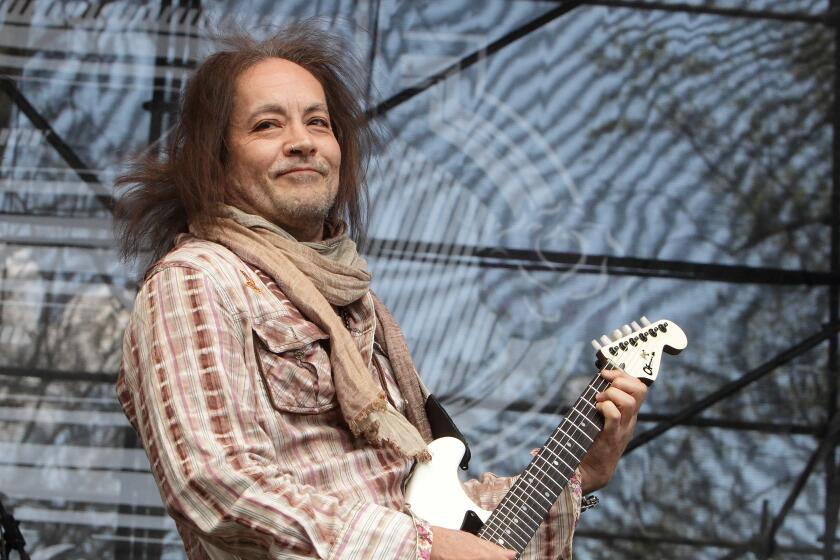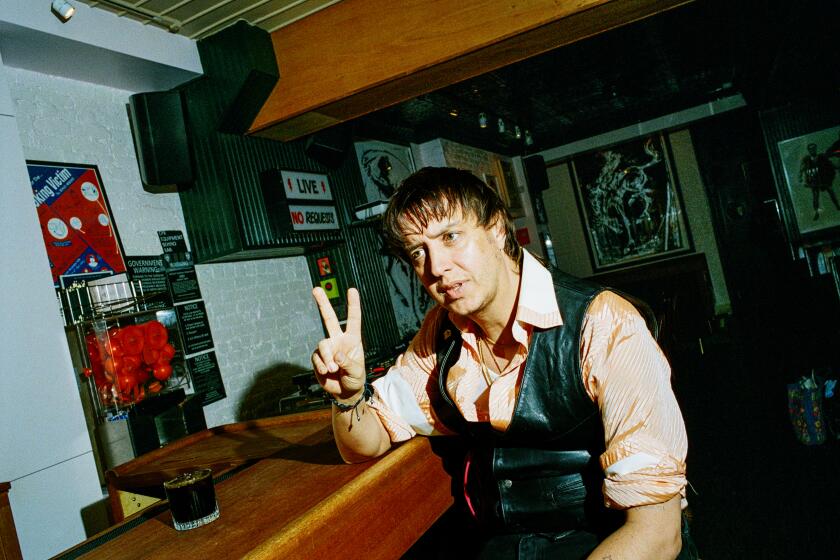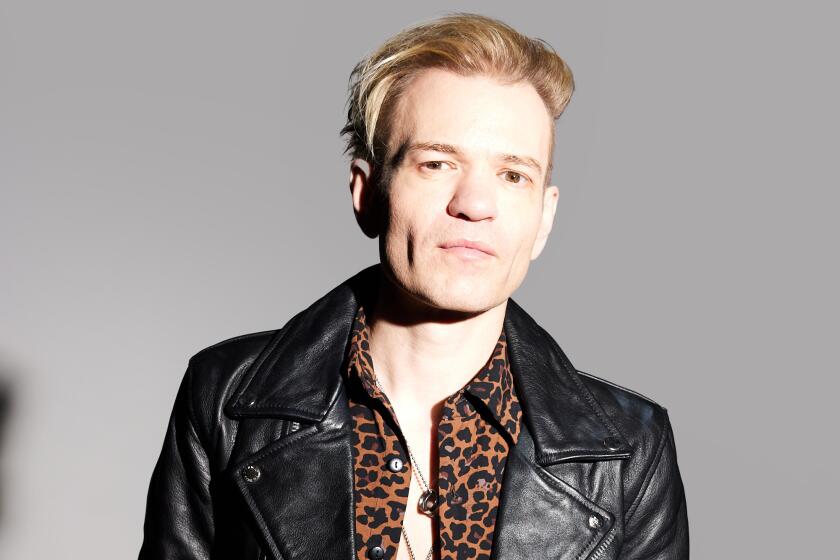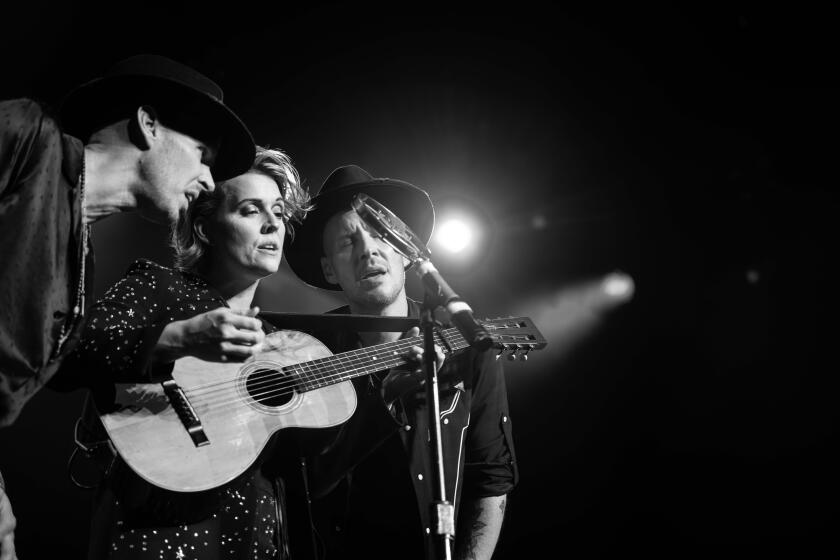JAZZ REVIEW : Bateke Brings Party With Him to San Juan Library
Nigerian pop star King Sunny Ade once described his music as “Essentially party music . . . the fans out there want to dance and the rhythm is basically simple, and once you hook it up, it flows endlessly.”
The same description applies nicely to Bateke Beat’s first set at the courtyard of the San Juan Capistrano Regional Library on Saturday. The rhythms took on a life of their own, coursing through the music with only subtle changes, inducing almost hypnotic states with their insistent pulses. So inviting was the call to move that it was surprising that members of the audience waited until the fourth and last tune of the set to jump on the stage, swaying and jerking with the band. But from there, the party was on!
Unlike Ade, who focuses on the Juju music of his native Nigeria, Bateke embraces a host of regional African styles as well as acknowledging debts to American pop music and jazz. This is due to bassist, saxophonist and sometimes vocalist-percussionist Bateke’s wide-ranging experience. Born in the Congo, Bateke (the name comes from one of the peoples that populate the Central African region) was influenced by everything from Salvation Army bands to the rhythms of the Ituri forest pygmies. He spent three years with Nigerian Fela Anikulapo Kuti’s respected band and has been in America since 1985.
But Bateke’s approach is more celebratory than Kuti’s, and without the heavy political ties (Kuti has battled with successive Nigerian governments for about 20 years). Sticking mainly to the bass, Bateke propelled each tune with tight, often provocative underpinnings that added detail to the polyrhythmic mix. Backed by guitarist, keyboardist and vocalist Ilo Ngoma, guitarist Andy Abad, percussionist Aron Gross and drummer Homero Chavez, Bateke cultivated each of the four lengthy numbers with long percussive introductions before anchoring the band in rock-steady formation.
The opening tune, Bateke’s “Comparaison” was typical, with its percussive introduction and vocal call-and-response exchanges between the bassist and Ngoma. While Abad covered rhythm guitar duties, Ngoma sprinkled clear, crisp, sometimes repetitive lead guitar phrases over the mix, adding chordal accents for emphasis. All the while, the rhythm continued to churn.
With Abad playing acoustic guitar, the band broke into a two-chord shuffle while a dancer, dressed in a strapless black and gold dress with matching headpiece, whirled around the stage in a performance that was as notable for the stamina it required as it was for its grace. On the last number, “What’s Up,” the dancer encouraged members of the audience to join her on stage, where they quickly began bobbing and weaving.
Though billed as a saxophonist, Bateke spent little time with his tenor, breaking it out on only a single tune. But what he played was satisfying in the rhythmic context and was presented with some of Sonny Rollins’ rough-hewn tone. Still, the bandleader seemed more content making percussive contributions with his bass or playing a tall, conga-like drum, than he was working above the beat with his horn.
More to Read
The biggest entertainment stories
Get our big stories about Hollywood, film, television, music, arts, culture and more right in your inbox as soon as they publish.
You may occasionally receive promotional content from the Los Angeles Times.










